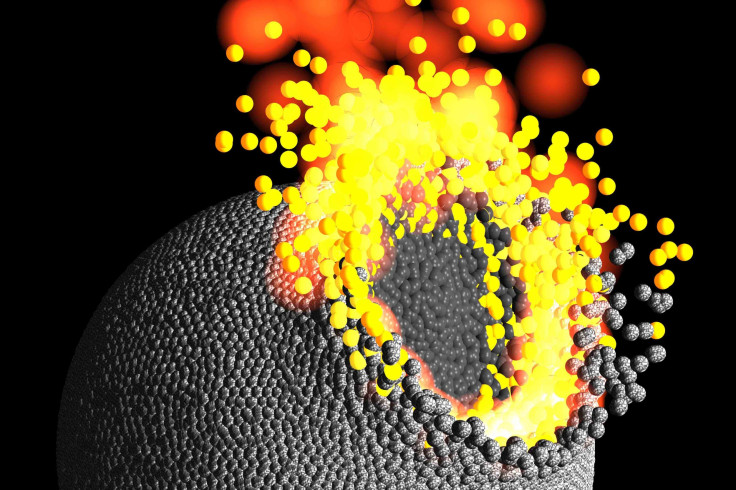Earth, Mars Formation Involved Planetary Body Collisions, Vaporized Rock, Silicate Atmospheres

Earth is thought to have formed about 4.6 billion years ago, about 400 million years after the sun and solar system itself came into being. But it wasn’t much of a system at the time, with chaotic collisions between planetary bodies being the order of the day till such time as present-day planets formed and settled into their orbits.
How exactly did Earth form, though? Or, for that matter, what processes led to the creation of Mars, our barren, red neighbor being eyed now by space colonizing enthusiasts? The two planets formed in very similar ways, new research shows. And other than the well-known concept of accretion, the messy process involved collisions between planetary bodies, vaporized rock and the resulting silicate atmospheres.
As planetary mass objects in the early solar system tried to accrete more material, they would sometimes collide with each other and consequently either lose material or gain some. But in both scenarios, the force of the impact would generate large amounts of heat that would cause solid rocks to turn into either lakes and oceans of magma, or even straight into vapor, creating an atmosphere of silicates around the body.
But if the object hadn’t yet gained enough material to be approximately as large as Mars, it wouldn’t have the requisite gravity to hold onto the noxious atmosphere of the rock vapor. As the process of accretion continued and the silicate atmosphere kept getting lost to space, the planetary body’s composition itself underwent significant changes.
And such a repeating sequence of events led to the formation of both Earth and Mars, as well as the minor planet Vesta in the main asteroid belt, according to researchers from the University of Bristol in the United Kingdom.
“We have provided evidence that such a sequence of events occurred in the formation of the Earth and Mars, using high precision measurements of their magnesium isotope compositions. Magnesium isotope ratios change as a result of silicate vapor loss, which preferentially contains the lighter isotopes. In this way, we estimated that more than 40 per cent of the Earth’s mass was lost during its construction. This cowboy building job, as one of my co-authors described it, was also responsible for creating the Earth’s unique composition,” Remco Hin from the university, who led the research, said in a statement Wednesday.
Asteroid samples from Mars and Vesta were analyzed, along with samples from Earth, to measure magnesium isotopes with unprecedented accuracy and precision. It was found that all three bodies had different ratios of those isotopes than “any plausible nebula starting materials” and that the “slipshod construction process” led to the unique chemical characteristics of Earth.
“This process seems common to planet building in general, not just for Earth and Mars, but for all planets in our Solar System and probably beyond, but differences in the collision histories of planets will create a diversity in their compositions,” Hin said.
The study, titled “Magnesium isotope evidence that accretional vapour loss shapes planetary compositions,” appeared online Wednesday in the journal Nature.
© Copyright IBTimes 2024. All rights reserved.





















